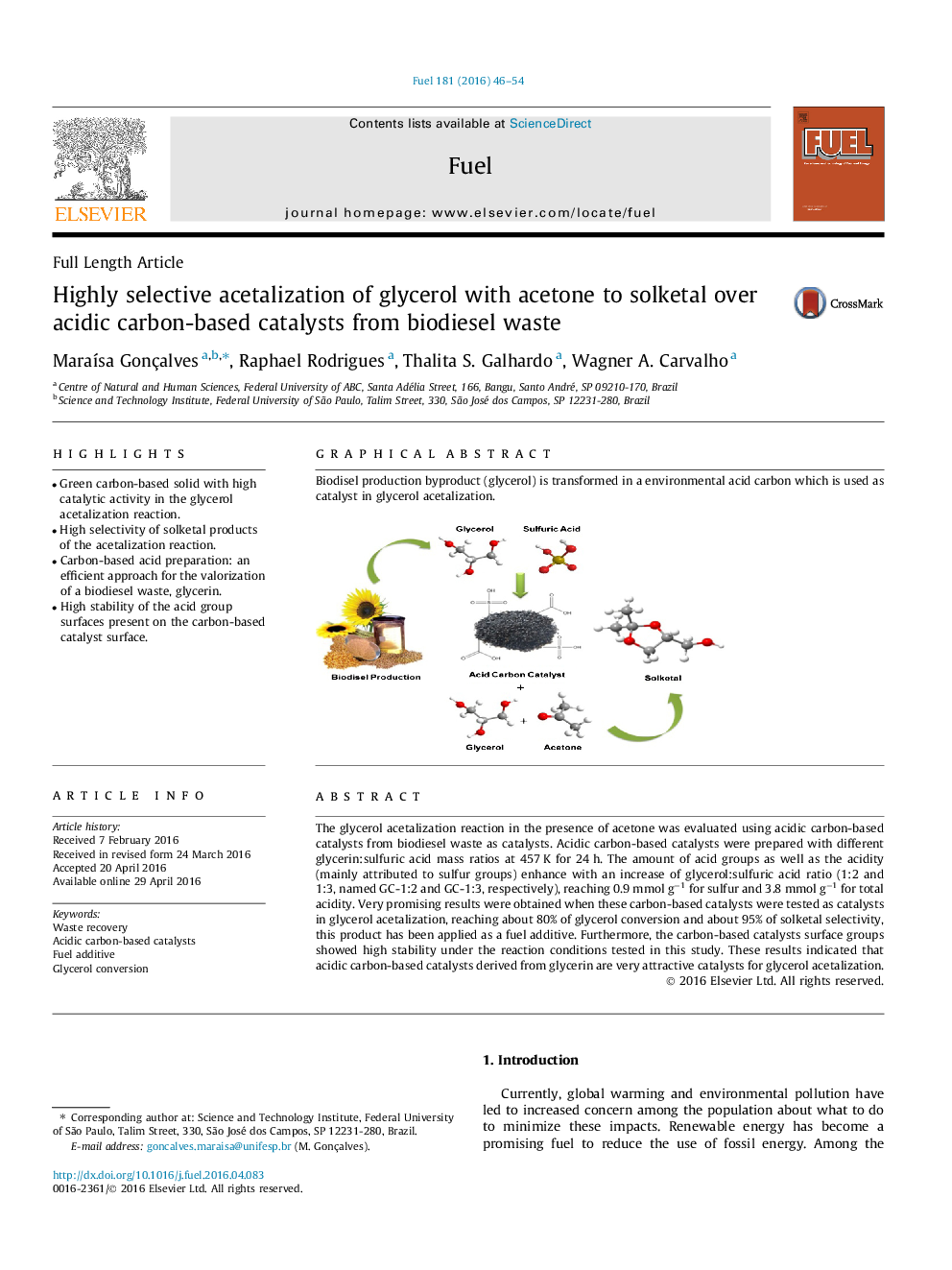| Article ID | Journal | Published Year | Pages | File Type |
|---|---|---|---|---|
| 204896 | Fuel | 2016 | 9 Pages |
•Green carbon-based solid with high catalytic activity in the glycerol acetalization reaction.•High selectivity of solketal products of the acetalization reaction.•Carbon-based acid preparation: an efficient approach for the valorization of a biodiesel waste, glycerin.•High stability of the acid group surfaces present on the carbon-based catalyst surface.
The glycerol acetalization reaction in the presence of acetone was evaluated using acidic carbon-based catalysts from biodiesel waste as catalysts. Acidic carbon-based catalysts were prepared with different glycerin:sulfuric acid mass ratios at 457 K for 24 h. The amount of acid groups as well as the acidity (mainly attributed to sulfur groups) enhance with an increase of glycerol:sulfuric acid ratio (1:2 and 1:3, named GC-1:2 and GC-1:3, respectively), reaching 0.9 mmol g−1 for sulfur and 3.8 mmol g−1 for total acidity. Very promising results were obtained when these carbon-based catalysts were tested as catalysts in glycerol acetalization, reaching about 80% of glycerol conversion and about 95% of solketal selectivity, this product has been applied as a fuel additive. Furthermore, the carbon-based catalysts surface groups showed high stability under the reaction conditions tested in this study. These results indicated that acidic carbon-based catalysts derived from glycerin are very attractive catalysts for glycerol acetalization.
Graphical abstractBiodisel production byproduct (glycerol) is transformed in a environmental acid carbon which is used as catalyst in glycerol acetalization.Figure optionsDownload full-size imageDownload as PowerPoint slide
